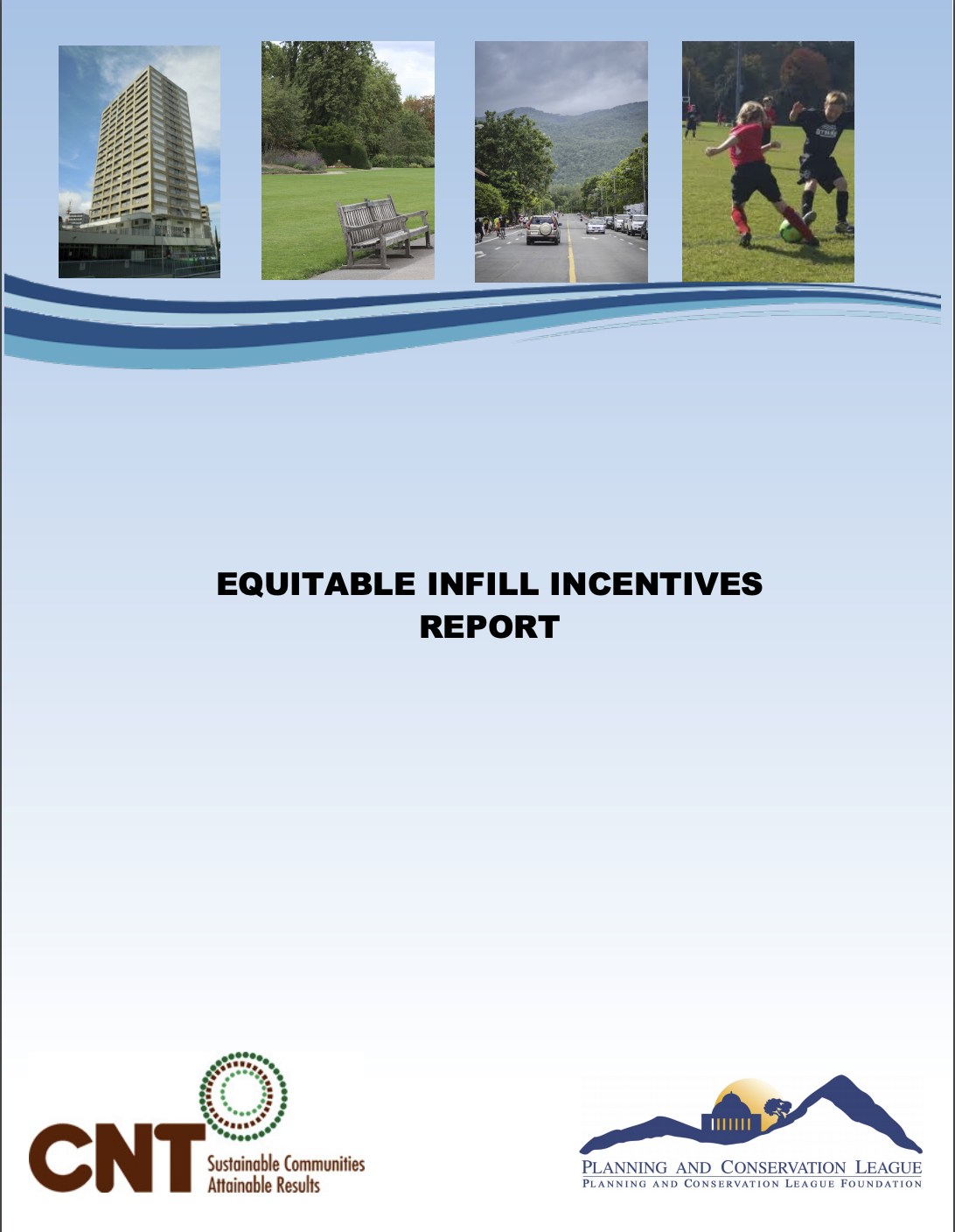The Planning and Conservation League has just released its Equitable Infill Incentives Report- an in-progress policy project to create a menu of strategies that encourage smart growth. Working with expert stakeholders around the state of California, they have outlined a new practical approach to infill for urban, suburban and rural areas. To meet the CA Air Resources Board (CARB) greenhouse gas reduction goals for 2050, cities and regions need to reduce each person’s vehicle miles traveled by 15%.
Of the many fascinating findings and questions in the report, their new definition of equitable infill stands out. When I read it, each bullet reminded me of it’s opposite that I’ve witnessed development projects. While they admitably bring to mind urban conditions greater than that of Placer County, I am looking forward to discovering how PCL adapts it to rural and suburban conditions. What do they bring to mind for you? Can you think of a place in Placer County where these criteria would have helped prevent a problem?
To qualify as equitable infill, the project must:
- Be located wholly within a regional or city ‘Green Zone” (areas of -15% of existing average per capita VMT, or within ½ mile of a high-quality transit stop). Or-
- If not in an existing Green Zone, demonstrate with an Initial Study transportation analysis that the project is projected to have VMT performance of at least -15% of regional or city average.
- Not be in areas excluded from applicability, as governed by objective statewide mapping of sensitive lands essential to protecting public health and safety and the environment, or as determined by an Initial Study.
- Be in conformity to all applicable local code, zoning, and design standards.
- For housing or mix-used projects of ten or more housing units, dedicate deed-restricted units at a minimum of 10% of units affordable to Low-Income households, 5% of units affordable to Very Low-income households, and 5% of units affordable to Extremely Low-income households, unless the given jurisdiction has met its RHNA allocations for Low, Very Low or Extremely Low-Income housing, respectively. If Extremely Low-Income housing is deemed infeasible within the project itself, the project must directly accommodate an additional project siting for the Extremely Low-Income units within no more than a ½ mile radius of the original project site. -or-
- For multi-project community-wide or jurisdiction-wide special districts or revitalization plan areas, dedicate a minimum of 20% of units affordable to Low-Income households, 10% of units 4 affordable to Very Low-income households, and 10% of units affordable to Extremely Low-income households.
- Not include demolition of: o Housing that is subject to a recorded covenant, ordinance, or law that restricts rents to levels affordable to persons and families of moderate, low, or very low income.
- Housing that is subject to any form of rent or price control.
- Housing that has been occupied by tenants within the past 10 years (or a site which was previously occupied by tenants and was demolished within 10 years).
- A historic structure that was placed on a national, state, or local historic register.
- Where it is found by the governing agency that demolition is warranted, dedicate at least a 50% increase in deed-restricted units affordable to the income levels of the units being replaced, proportionately, either within the project site itself, or within a ½ mile radius of the project site.
- Provide housing tenants displaced by the demolition with:
- Assistance in acquiring a comparable housing unit within a 1/2 mile of the project.
- Funds for the cost of relocation as well as rental assistance at least equal to any difference of the previous rent and the rent of the relocation site for 36 months.
- Right of first return to occupy a comparable unit in the new development at the same rent.
Pasted from PCL’s report summary document: https://www.pcl.org/media/2020/04/PCL-Equitable-Infill-Incentives-Policy-Brief.pdf?blm_aid=23599.
Another big stand out for me was their recognition of affordable commercial space for neighborhood-scale businesses in the further considerations section. Neighborhood scale business is a critical component in making walkable (aka low-VMT) communities and they can face displacement with development too. They plan to review the idea of extending basic anti-rent gouging and just-cause eviction protections to commercial tenants. Needless to say, I look forward to following their project’s progress and getting fresh ideas for AEL’s regional smart growth vision.
You can find the links to the whole report and summary here: https://www.pcl.org/infill/?blm_aid=23599
Happy reading!








